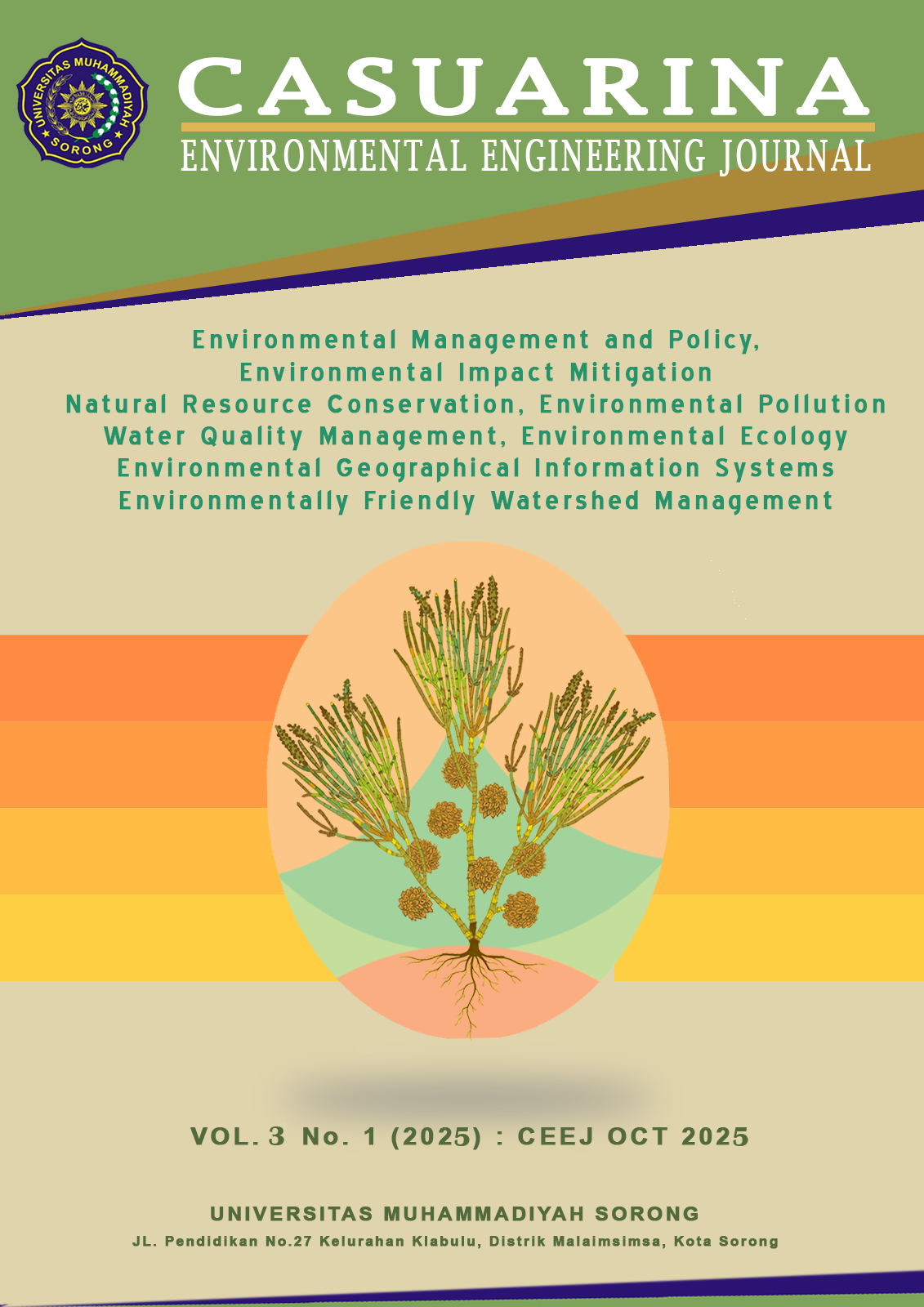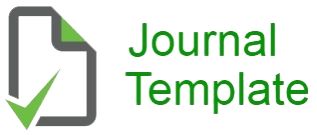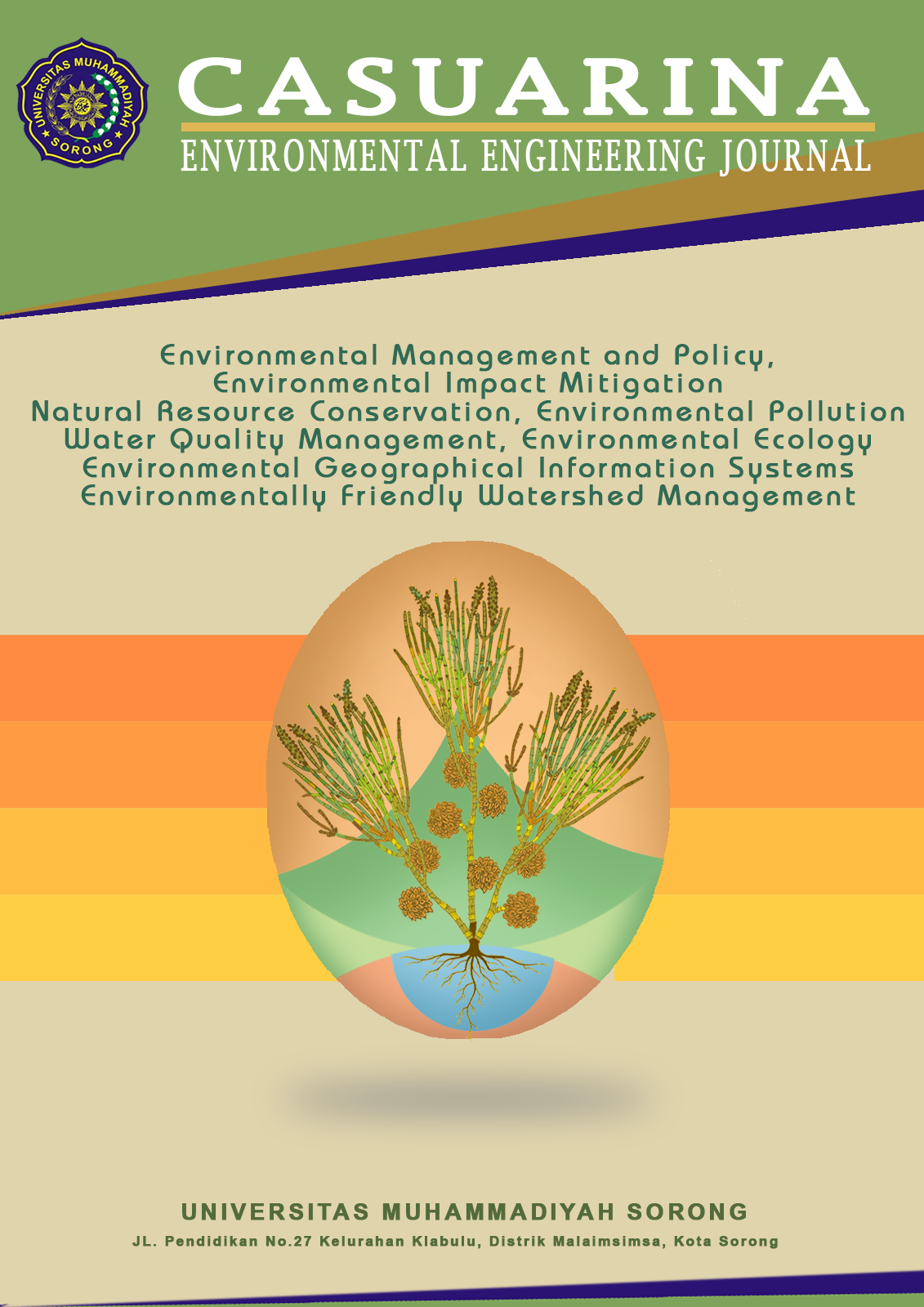Kajian Pengelolaan Sampah Organik di PT Pertamina EP Cepu Field Menggunakan Metode Vessel Drum Composting
Bahasa Indonesia
DOI:
https://doi.org/10.33506/ceej.v3i1.4953Keywords:
EM4, Sampah Organik, Pengomposan, Vessel Drum CompostingAbstract
Pengelolaan sampah organik masih menjadi masalah lingkungan yang signifikan, terutama di kawasan industri dan perkantoran. Penelitian ini mengkaji penerapan metode pengomposan drum bejana di PT. Pertamina EP Cepu Field sebagai solusi pengolahan sampah organik dengan volume 40 kg/hari atau 1.200 kg/bulan. Metode penelitian yang digunakan adalah pendekatan deskriptif kuantitatif melalui observasi lapangan, wawancara, dan kajian pustaka. Sistem pengomposan drum bejana dipilih karena desainnya yang tertutup, efisiensi lahan, kemudahan pengoperasian, dan kemampuannya meminimalkan risiko bau dan hama. Perhitungan teknis menunjukkan perlunya 35 drum dengan kapasitas masing-masing 200 liter, sehingga menghasilkan volume total 7 m³. Luas area pengomposan yang dibutuhkan adalah 36 m² dengan perkiraan waktu proses 30 hari. Proses ini menggunakan bioaktivator EM4 sebanyak 1,2 liter per hari, menghasilkan rasio C/N sebesar 30,6:1, sesuai dengan standar SNI 19-7030-2004. Temuan tersebut menunjukkan bahwa pengomposan drum bejana merupakan metode yang efektif untuk pengelolaan limbah organik skala menengah, menghasilkan kompos berkualitas tinggi sekaligus mendukung penerapan konsep 3R (Gunakan Kembali, Kurangi, Daur Ulang) di perusahaan.
References
1. Samal K, Dash RR, Bhunia P. Treatment of wastewater by vermifiltration integrated with macrophyte filter: A review. J Environ Chem Eng. 2017;5(3):2274–89.
2. Muthmainnah, Idris. Pengelolaan Sampah di TPA PATOMMO SIDRAP (Tinjauan Yuridis Perda No. 7 Tahun 2016 Tentang Pengelolaan Persampahan). J Madani Regal View, 4. 2020;23–8.
3. Palaniveloo K, Amran MA, Norhashim NA, Mohamad-Fauzi N, Peng-Hui F, Hui-Wen L, et al. Food waste composting and microbial community structure profiling. Food Waste Compost Microb Community Struct Profiling. 2020;8(6):1–30.
4. Pellejero G, Palacios J, Vela E, Gajardo O, Albrecht L, Aschkar G, et al. Effect of the application of compost as an organic fertilizer on a tomato crop (Solanum lycopersicum l.) produced in the field in the lower valley of the río negro (argentina). Int J Recycl Org Waste Agric. 2021;10(2):145–55.
5. Widiyastuti E, Permana AS. Efektivitas Komposter Tertutup untuk Pengelolaan Sampah Organik Rumah Tangga. J Ilmu Lingkungan, 20(1). 2022;34–42.
6. Ramadhan SN, Halim R, Putri FE, Lesmana O, Hidayati F. Efektivitas Komposting Limbah Padat Serai Wangi Dengan Menggunakan EM4 dan Mikro Organisme Lokal (Nasi Basi dan Serai Wangi). J Keselam Kesehat Kerja dan Lingkung. 2023;4(2):83–90.
7. Yanti R, Dharma S, Elita N, Ibrahim H. PENGELOLAAN LINGKUNGAN : Bank Sampah dan Teknologi Pengolahan Limbah Rumah Tangga Berkelanjutan. Agusdi Y, Sepriano S, Dihniah N, editors. PT. Sonpedia Publishing Indonesia; 2024.
8. Zai P, Mendrofa PZ. PENGARUH PEMBERIAN EM4 DENGAN KONSENTRASI BERBEDA TERHADAP LAMA PELAPUKAN DAN KUALITAS KOMPOS DARI LIMBAH DAPUR ORGANIK DALAM KOMPOSTER TERTUTUP SKALA RUMAH TANGGA. PENARIK J Ilmu Pertan dan Perikan. 2025;02:128–33.
9. Purimahua SL, Agus Setyobudi, Mustakim Sahdan, Marylin S. Junias, Tiwuk Widiastuti, Sarinah Basri K. Penerapan Teknologi Komposter dan Pemanfaatan Sampah Organik menjadi
Kompos pada Skala Rumah Tangga. Genitri J Pengabdi Masy Bid Kesehat. 2023;2(1):84–93.
Downloads
Published
How to Cite
Issue
Section
License
Copyright (c) 2025 Casuarina: Environmental Engineering Journal

This work is licensed under a Creative Commons Attribution-NonCommercial-ShareAlike 4.0 International License.
Please find the rights and licenses in Casuarina: Environmental Engineering Journal. By submitting the article/manuscript of the article, the author(s) agree with this policy. No specific document sign-off is required.
1. License
The non-commercial use of the article will be governed by the Creative Commons Attribution license as currently displayed on Creative Commons Attribution-NonCommercial-ShareAlike 4.0 International License.
2. Author(s)' Warranties
The author warrants that the article is original, written by the stated author(s), has not been published before, contains no unlawful statements, does not infringe the rights of others, is subject to copyright that is vested exclusively in the author, and free of any third party rights, and that any necessary written permissions to quote from other sources have been obtained by the author(s).
3. User/Public Rights
Casuarina: Environmental Engineering Journal's spirit is to disseminate articles published are as free as possible. Under the Creative Commons license, Casuarina: Environmental Engineering Journal permits users to copy, distribute, display, and perform the work for non-commercial purposes only. Users will also need to attribute authors and Casuarina: Environmental Engineering Journal on distributing works in the journal and other media of publications. Unless otherwise stated, the authors are public entities as soon as their articles got published.
4. Rights of Authors
Authors retain all their rights to the published works, such as (but not limited to) the following rights;
- Copyright and other proprietary rights relating to the article, such as patent rights,
- The right to use the substance of the article in own future works, including lectures and books,
- The right to reproduce the article for own purposes,
- The right to self-archive the article (please read our deposit policy),
- The right to enter into separate, additional contractual arrangements for the non-exclusive distribution of the article's published version (e.g., post it to an institutional repository or publish it in a book), with an acknowledgment of its initial publication in this journal (Casuarina: Environmental Engineering Journal).
5. Co-Authorship
If the article was jointly prepared by more than one author, any authors submitting the manuscript warrants that he/she has been authorized by all co-authors to be agreed on this copyright and license notice (agreement) on their behalf, and agrees to inform his/her co-authors of the terms of this policy. Sentralisasi will not be held liable for anything that may arise due to the author(s) internal dispute. Sentralisasi will only communicate with the corresponding author.
6. Royalties
Being an open accessed journal and disseminating articles for free under the Creative Commons license term mentioned, author(s) aware that Casuarina: Environmental Engineering Journal entitles the author(s) to no royalties or other fees.
7. Miscellaneous
Casuarina: Environmental Engineering Journal will publish the article (or have it published) in the journal if the article editorial process is successfully completed. Casuarina: Environmental Engineering Journal's editors may modify the article to a style of punctuation, spelling, capitalization, referencing, and usage that deems appropriate. The author acknowledges that the article may be published so that it will be publicly accessible and such access will be free of charge for the readers as mentioned in point 3.








